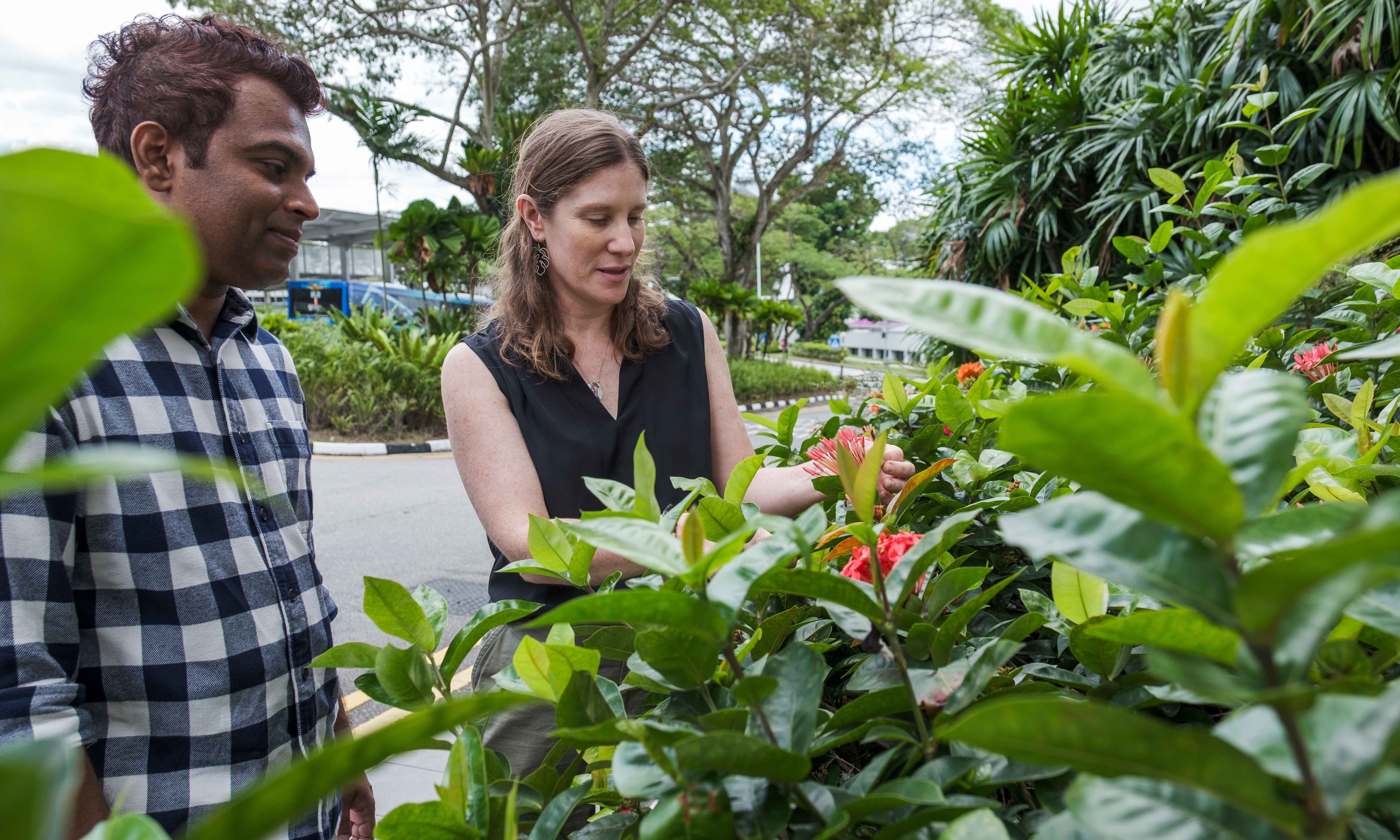 Research Associate Dr Tharaka S. Priyadarshana and Associate Professor Eleanor Slade from NTU Singapore at a road verge in the University. Shrubs like the ones pictured were surveyed in verges by the researchers.
Research Associate Dr Tharaka S. Priyadarshana and Associate Professor Eleanor Slade from NTU Singapore at a road verge in the University. Shrubs like the ones pictured were surveyed in verges by the researchers.
Plants, especially flowering ones, are often grown along roads to beautify cities. Now, a new Singapore study has found that such road verges - small artificial green spaces beside busy roads - are also beneficial to butterflies.
The researchers, led by NTU Singapore, showed that road verges with various flowering plants that are cut less frequently or selectively pruned can improve butterfly numbers and their diversity. The greenery surrounding the verges also has a similar positive impact on butterflies.
While busy roads negatively affect butterflies, the benefits of road verges could offset this effect if traffic speeds are moderate.
Associate Professor Eleanor Slade from NTU's Asian School of the Environment (ASE), the senior author of the study, explained that a greater diversity of flowering plants offers a variety of nectar sources for butterflies. This can attract more species of butterflies, especially those that prefer a broad range of nectar from different flowers. She collaborated with Associate Professor Janice Lee, also from ASE, who is a co-author of the research.
According to Dr Tharaka S. Priyadarshana, a Research Associate from ASE and the study's first author, while road verges provide nectar sources for butterflies, green spaces away from busy roads may offer better conditions for butterflies to lay their eggs and rest.






